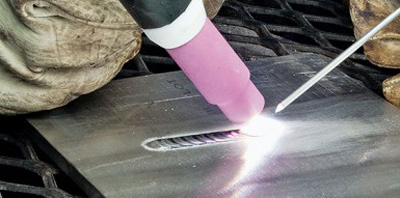 NeoCast - Light Metal Technologies offer an extensive range of magnesium alloy welding rod for TIG (argon arc) welding. AZ92A is the most popular wire and produce superior joints with the maximum tensile strength offered by this alloy. AZ92A is Mg - 9 Al - 2 Zn welding alloy which finds wide use for fabricating and repair welding of many similar compositions. Casting repair and refurbishment is the most common application. AZ92A is preferred for joining many casting alloys.
NeoCast - Light Metal Technologies offer an extensive range of magnesium alloy welding rod for TIG (argon arc) welding. AZ92A is the most popular wire and produce superior joints with the maximum tensile strength offered by this alloy. AZ92A is Mg - 9 Al - 2 Zn welding alloy which finds wide use for fabricating and repair welding of many similar compositions. Casting repair and refurbishment is the most common application. AZ92A is preferred for joining many casting alloys.
Product details:
- Application: General purpose magnesium welding rods for welding magnesium;
- Standard diameter: 2mm, 3mm. Length approx. 1 metre;
- Type: TIG rode;
- Applications: Maintenance and Repair Work;
Packaging:
Packed in tough plastic tubes with loose, taped end caps labelled with alloy, size, weight and melt number. Supplied in approx. 1kg or more packages.
Tips for welding with magnesium:
Cleanliness of both the base metal and filler metal is extremely important when welding with magnesium. Chemical or mechanical cleaning of the joint area and filler metal, to remove any surface oxidation, should precede any welding. This can be accomplished using a solution of 700ml chromic acid, 150ml ferric nitrate and 2ml potassium fluoride in enough water to make 4 liters. Bring the solution to 20-30°C, then immerse the part for 3 minutes, rinse in hot water, then air dry. Mechanical cleaning can be done using an aluminum or stainless steel wire brush, steel wool or an aluminum-oxide abrasive cloth. Gloves should be worn when handing cleaned filler metal.
Gas tungsten arc (TIG) and gas metal arc (MIG) welding:
Flux is not required for TIG or MIG welding processes. Although this is convenient, it means the cleanliness of the base metal and filler metal is even more critical. Argon is recommended shielding gas, however, an argon-helium mixture can increase filler metal flow and penetration. Do not use pure helium as this will create undesirable result. TIG welding can be done with AC current, DC reverse polarity or DC straight polarity. AC current will give good penetration. DC reverse polarity (electrode positive) will give shallow penetration but wide weld deposits. DC straight polarity (electrode negative) will give deep penetration but narrow weld deposits. Pure, Thoriated or Zirconiated Tungsten may be used. MIG welding is done with DC reverse polarity (electrode positive). MIG welding will increase weld speed by 2 to 4 times faster than TIG welding. MIG welding is the best process for heavy gage parts.
Oxyacetylene welding:
Oxyacetylene welding of magnesium is not commonly used. This process should only be considered for single-pass welding on thin gauges of magnesium. A fluoride or chloride flux should be used on the base metal and filler metal in order to clean and protect the weld pool. However be sure to remove any flux residue by washing in hot water, pickle for 2 minutes in a chrome pickle solution, then boil in a 6% solution of sodium dichromate for 2 hours.






